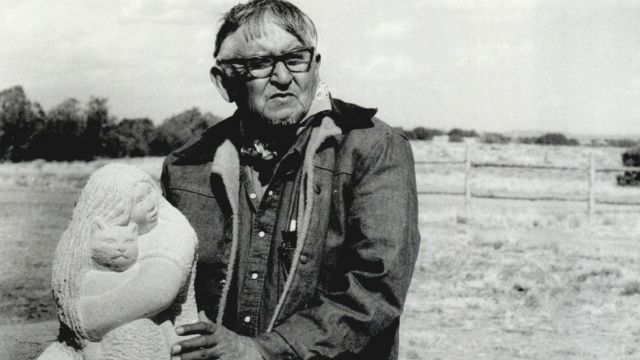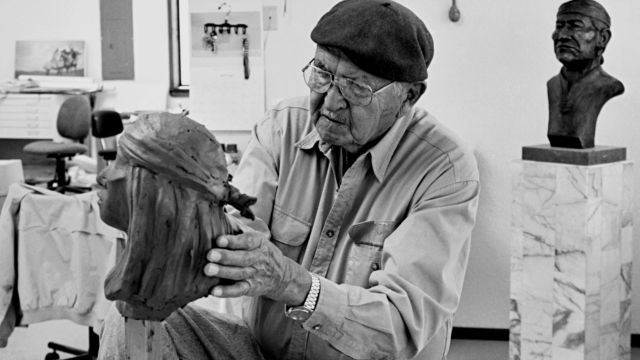Native American sculptor and painter Allan Haozous, better known by his artistic name Allan Houser, was a significant figure whose works had a lasting impression on the art world. His creative genius and great cultural significance are reasons to appreciate his legacy.
In addition to examining Allan Haozous’s age, cause of death, and net worth, this article will highlight his significant achievements to the field of art.
Early Life of Allan Haozous
On June 30, 1914, Allan Haozous was born in Apache, Oklahoma. Being a part of the Chiricahua Apache tribe, he was raised with a strong foundation in the customs and heritage of his people.
Sam Haozous, Allan’s father, survived the infamous Chiricahua captivity by the United States government; this experience would have a significant impact on Allan’s artistic perspective.
Allan began attending the Santa Fe Indian School in 1934. There, he was taught by Dorothy Dunn, a trailblazing art educator who highlighted the value of traditional Native American art forms. Allan’s distinctive style, which combined modernist methods with indigenous themes, was shaped by this schooling.
Career of Allan Haozous

The sculptures that Allan Haozous is most known for frequently feature Native American themes and people. His creations encapsulate the passion and tenacity of his people with their flowing contours and sense of movement.
“Offering of the Sacred Pipe” and “Sacred Rain Arrow,” two of his most well-known pieces, are on display at prestigious museums and public areas.
Apart from his sculptures, Allan was a skilled painter as well. His paintings frequently reflected the rich cultural legacy of the Apache people with their vivid colors and elaborate motifs. Allan became firmly established as one of the most significant Native American artists of the 20th century as a result of the many honors and recognitions his works garnered during his career.
During his lifetime, Allan Haozous’s artistic talents were well acknowledged. President George H.W. Bush gave him the National Medal of Arts in 1992, one of several honors he earned. This accolade brought attention to Allan’s contributions to the national and worldwide promotion of Native American art and culture.
How did Allan Haozous die?
On August 22, 1994, Allan Haozous passed away at his Santa Fe, New Mexico, home. He was a resident at the time. Many have been wondering what exactly caused him to pass away ever since his death was announced.
His death was brought on by cancer-related complications, which was the cause of his passing. Although his death signaled the end of an era for Native American painting, artists all over the world are still influenced and inspired by his creations.
Because he had a career where he could work for both an appreciating public and his own satisfaction, he was fortunate to be the kind of artist who did not need to be “discovered” after his death.
Discover the legacy of Allan Haozous, the renowned Native American sculptor and painter. Explore his early life, influential career, and lasting impact on art. Learn about his age, cause of death, and net worth. Visit our website to dive into the celebrity world and stay in touch for more inspiring content.
